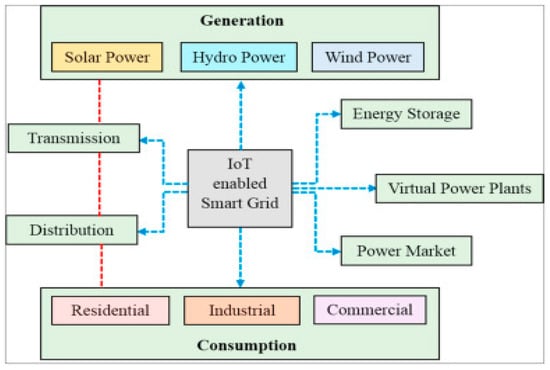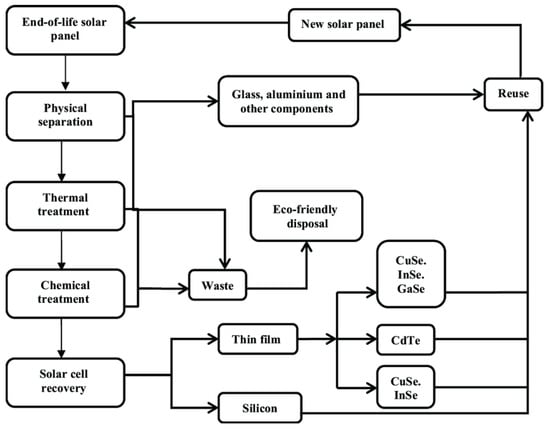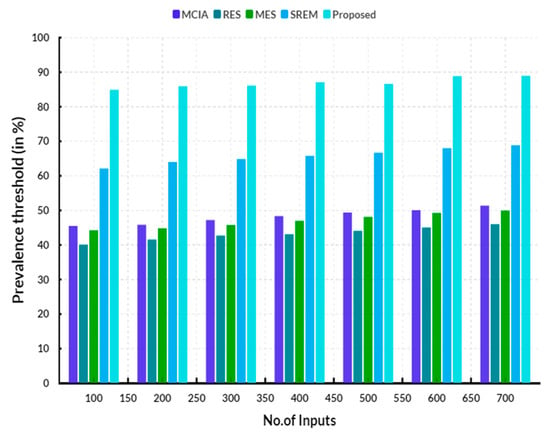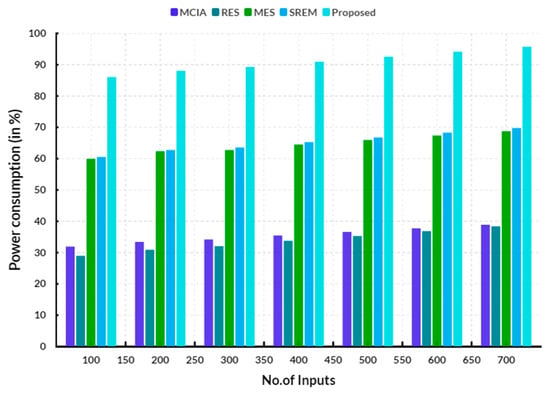Abstract
Maximizing the efficiency of solar energy in Industry 4.0 requires an automated AI-powered system. The AI-powered system relies on intelligent algorithms to identify the most efficient energy sources for the industry’s needs and adjust them accordingly while learning from every task it is given. To increase the efficiency of solar energy, the system first utilizes sensors to monitor the environment and conditions of the solar cells, optimizes the solar energy for the machines running in the industrial setting, and then stores the energy in a reserve storage system. By continually monitoring and adjusting the energy settings, the AI-powered system efficiently maximizes the efficiency of the solar energy generated for industrial use. Furthermore, the system can be customized according to your industry’s changing needs and requirements, providing the ability to reduce costs in energy usage while improving the efficiency and productivity of machines.
1. Introduction
Industry 4.0 has presented us with exciting opportunities and challenges, especially when it comes to sustainability and climate change. Solar energy is undoubtedly one of the most promising renewable energy sources and has the potential to revolutionize Industry 4.0 [1]. Furthermore, the development of smart energy management systems can help optimize electricity usage and reduce energy consumption, thus saving additional costs [2]. All these factors make it a crucial element of the 21st century and beyond. The innovations of solar energy in Industry 4.0 present a unique opportunity for the world to move towards a clean energy future. Solar energy is an abundant, renewable source of energy with a wide range of innovative technologies that can be used to transform the way the world’s energy is produced and consumed [3]. PV cells are able to convert sunlight into electrical energy with a high efficiency rate that can then be directly transformed into useful electrical energy [4]. This software can enable users to better optimize production, minimize losses, and identify regions of potential for implementing solar projects and to plan the most cost-efficient strategies for capturing and storing solar energy [5]. The innovations of solar energy in Industry 4.0 offer a huge potential to help reduce greenhouse gas emissions, create secure energy supplies, and stimulate the global economy. As the world moves towards a more sustainable future, solar energy is quickly becoming an essential part of the equation. The main contribution of the research has the following:
- Intelligent Grid: Solar energy provides a more reliable, efficient and intelligent power grid since the solar panels are placed on the rooftop or in areas not affected by weather conditions.
- Uninterrupted Power Supply: Solar energy provides an uninterrupted power supply as it uses decentralized location to assist in energy distribution.
- Consumer Engagement: Solar energy attracts the attention of customers and helps them to engage with industry companies as part of the digital transformation process.
- Flexible Production: Solar energy is a good source of flexible and reliable production. It responds to demand changes and does not require large investments in production facilities [6,7,8].
2. Materials and Methods
In recent years, the world has become more reliant on industrial technologies and practices to drive economic growth. The development of Industry 4.0 will see machines become more connected to one another, with artificial intelligence taking on more of the work load [9]. This means they are usually inefficient and not cost-effective in the long term. Additionally, the supply of solar energy is dependent on weather conditions, and many businesses are reluctant to invest in solar technologies without a reliable energy supply [10,11]. However, these other sources of renewable energy are often significantly more difficult to implement and may require expensive infrastructure investments for industries to take advantage of them. Another problem associated with solar energy for Industry 4.0 is the sheer amount of energy that is needed [12]. While the use of renewable energy sources such as solar can help reduce emissions and provide businesses with more sustainable practices, it also introduces new energy management challenges [13]. In order to make the most of the potential energy sources available, businesses must consider alternative sources of energy, such as wind and geothermal, and integrate energy storage solutions such as advanced battery systems into their operations. Doing so can help businesses remain competitive in today’s ever-changing and increasingly technological world [14]. As solar energy continues to become more viable as a source of renewable energy, more and more manufacturers are turning to solar energy as an alternative to the traditional sources of energy [15]. This is especially important for industrial companies that have limited access to traditional sources of energy. Solar energy is also more affordable than other sources of energy, making it a preferred option for manufacturing companies that need to ensure cost-effectiveness [16]. There is also still a lack of mature solar technology solutions, such as batteries for storage, which can ensure a consistent supply of power. With the rapid advances in solar technology, such as more efficient and less expensive solar panels, as well as improved grid technologies and storage solutions, solar energy is becoming increasingly viable for industrial companies [17,18,19]. With the current advances in solar technology, the benefits of solar energy are becoming increasingly apparent to industrial companies. As a result, it is likely that the use of solar energy in Industry 4.0 will continue to grow [20]. The most commonly used AI algorithms used for efficient energy source identification and adaptation include:
- Reinforcement Learning: Reinforcement learning algorithms use iterative trial and error to find a solution to a problem. The goal of the algorithm is to identify an optimal behavior or solution to a problem with the highest reward. This makes it a useful tool for finding the most efficient energy source.
- Neural Networks: Neural networks are used to analyze large amounts of data and find patterns and relationships within the data. This allows for the system to better identify the most efficient energy source and determine the best way to adapt it.
- Evolutionary Algorithms: Evolutionary algorithms use biological and evolutionary principles to search and find the best solution. These algorithms are used to identify the most efficient energy source and adapt it.
- Swarm Optimization: Swarm optimization algorithms use collective intelligence to find the best solution to a problem. This makes them particularly useful for efficient energy source identification and adaptation.
3. Proposed Model
There are various types of sensors employed to optimize solar energy for industrial machinery. Solar sensors, such as Photo Voltaic (PV) sensors, are used to measure the intensity and direction of sunlight to calculate the energy produced by solar panels. This enables solar tracking systems to align the panel to the direction of the sun and maximize the amount of solar energy gathered. Temperature sensors are used to measure air temperature to detect when solar energy is captured at its highest. Inverter sensors measure the current and voltage of the solar system so that the panels can maintain optimal energy levels. Other sensors such as solar blockage sensors, peak power trackers, and angle of incidence sensors are also used to ensure maximum solar energy harvesting. With all of these sensors, industrial machinery is more accurately able to utilize solar energy for power. The implementation of maximizing the efficiency of solar energy in Industry 4.0 using automatic AI involves the use of Artificial Intelligence (AI) to optimize and control solar energy production.
AI models can also help in developing strategies to reduce energy costs, integrate renewable energy sources, and identify grid irregularities.
The use of automatic AI, such as computer vision and deep learning, can be applied to the solar energy industry to ensure energy production is both efficient and cost effective.
AI can also be used to predict optimal system placement and regulation, ensuring that the solar array is positioned correctly in order to maximize efficiency.
AI-driven automation technologies can refer to the use of real time data for performance monitoring, as well as automated grid-optimization techniques, such as the automated identification of the best regions for panel placement.
This automation is a key component in the expansion of solar energy and the management of its various applications within industrial settings, such as factory plants, warehouses, data centers, etc.
AI can help improve the efficiency of solar energy in industrial settings by optimizing the installation, monitoring, and regulation of solar arrays. The functional block diagram is shown in Figure 1.

Figure 1.
Functional Block diagram.
This system of optimization will use predictive analytics to detect the most efficient pattern of energy use and when, how and where to position solar panels for optimal sunlight exposure.
The system is then trained using supervised learning techniques with labeled data from either a public dataset or from medical classifications.
The main purpose is to amplify the output of energy collected from solar panels, making it a viable source of energy for those in the industrial space.
- First, the system collects data from the machines, such as miscellaneous operating parameters like temperature, pressure, humidity, and electrical current consumption.
- This data is then analyzed using artificial intelligence algorithms to identify patterns in the machines’ energy usage and identify opportunities for improvement.
- Based on the analysis, the system creates an optimized operational profile for the machines with recommendations for improvements.
- This energy-saving profile is then implemented into the machines’ settings, resulting in reduced energy usage and improved efficiency.
- The system also monitors the results of the optimized parameters, ensuring their effectiveness is maintained.
When certain thresholds in energy supply and demand are met, the reserve storage system determines when and how much energy to store and retrieve. This is generally performed by calculating the current energy supply and demand, then analyzing them against predetermined thresholds to decide when the system should store or retrieve energy. For example, a reserve storage system might be programmed to store energy when the current demand is higher than the current supply. This would provide additional energy to help support the current demand level. Alternatively, if the current energy supply is greater than the current demand, then the reserve storage system would retrieve energy and use it to help support the current supply level. The operational flow diagram is shown in Figure 2.

Figure 2.
Operational Flow diagram.
AI-based systems can be used to make predictions on the availability of solar energy, allowing organizations to better manage energy resources and identify opportunities for improvements in usage efficiency and overall system performance.
AI can also be used to develop smart algorithms that continually optimize the solar system configuration, allowing it to adapt to changing conditions and optimize the solar energy utilization. Adaptable features include:
- Intelligent Mobile Solar Tracking System: This system can automate and optimize the solar tracking process, allowing solar plants to adjust their solar panels according to the course of the sun for maximum power efficiency. This can be customized to different solar plant sizes, making it flexible for any installation or scale. The University of Queensland implemented the system and saw an increased power output of up to 25%.
- SolarPanelHub: It is a web-based monitoring and control system designed to help solar plant owners track, monitor and optimize power plants. It can be customized to various industry sectors, such as agriculture, transport, energy, water supply, and lighting. The system has also been implemented by several solar companies and has resulted in an increased efficiency of up to 30%.
- Halotech Solar Performance System: It is an intelligent solar power system designed to enhance solar plant performance in a multitude of industries. The system uses advanced machine learning algorithms and sensors to accurately monitor and optimize solar panel output. By using the system, solar plants have seen an increased energy output of up to 40%.
4. Results and Discussion
The proposed model has compared with the existing Multi-Criteria Intelligent Approach (MCIA), Renewable Energy System (RES), Multi-Energy Systems (MES) and smart renewable energy management (SREM).
Maximizing the efficiency of solar energy in Industry 4.0 is an important goal for companies in the renewable energy sector. With the rapid growth of Artificial Intelligence (AI) technologies, it has become easier to automate the optimization of energy efficiency by using AI techniques.
Figure 3 shows the comparison of energy efficiency. In a computation cycle, the proposed model reached 86.48% energy efficiency. The existing MCIA achieved 45.27%, RES reached 44.80%, MES reached 35.01% and SREM obtained 62.88% energy efficiency. Traditional methods for energy efficiency typically involve manually gathering data, such as through audits, surveys, or inspections, then analyzing the data and determining the best way to make improvements. The proposed AI-driven approach automates this process by using technology to gather and analyze data, learn from information, and optimize processes. This approach has an advantage over traditional methods in that it can quickly detect patterns and suggest new, innovative solutions in a much shorter timeframe. AI can also allow for greater optimization and automation of processes, which can result in improved energy efficiency. Additionally, AI-driven approaches come with additional benefits, such as a reduction in costs, fewer mistakes, and improved customer service.

Figure 3.
Energy efficiency.
The prevalence threshold for maximizing the efficiency of solar energy in Industry 4.0 using Automatic AI is the point at which the costs of using solar energy in Industry 4.0 outweigh the benefits.
Figure 4 shows the comparison of prevalence threshold. In a computation cycle, the proposed model reached 87.03% prevalence threshold. The existing MCIA achieved 48.33%, RES reached 43.08%, MES reached 47.01% and SREM obtained 65.75% prevalence threshold.

Figure 4.
Prevalence threshold.
The goal of maximizing the efficiency of solar energy in Industry 4.0 requires the computation of power consumption using automatic AI. This automated system is designed to identify and analyze usage patterns associated with solar systems, in addition to the surrounding environment.
Figure 5 shows the comparison of power consumption. In a computation cycle, the proposed model reached 90.95% power consumption. The existing MCIA achieved 35.47%, RES reached 33.72%, MES reached 64.51% and SREM obtained 65.26% power consumption. The limitations are the following,

Figure 5.
Diagnostic odds ratio.
- AI systems can suffer from poor generalization and a lack of domain knowledge, which means their optimized solutions, may not be optimal in environments different from the ones they have been trained on.
- AI systems rely on datasets to learn from and optimize their solutions. If these datasets contain biases or are incomplete, the AI system may generate flawed predictions or optimization scenarios.
- AI systems may not have the capability to change their approach or strategy when faced with dynamic changes in the environment, which could cause them to falter.
- AI systems may not be able to accurately model the long-term effects of their optimizations, meaning that short-term gains could be greatly outweighed by negative long-term impacts.
5. Conclusions
The goal of maximizing the efficiency of solar energy in Industry 4.0 using automatic AI is to enable industry to make more efficient use of solar energy for the purpose of power generation. This can be achieved by leveraging advances in Artificial Intelligence (AI) and automation. Through AI-driven automation, industrial solar systems can be monitored and managed more efficiently. AI can be used to detect and predict variations in solar energy output and make adjustments to use the most efficient amount of solar energy at any given time. AI can also be used to analyze data from solar energy systems and to automate the decision-making process, making it easier to optimize solar energy applications to maximize efficiency. One way to enhance power efficiency in 4IR solar plants is through the use of AI-powered energy optimization. AI-powered energy optimization can be used to identify and address inefficiencies in the solar plant’s system. These inefficiencies could include issues related to the site’s layout and availability of sunlight, the components of the solar plant, or waste from energy consumption. AI-powered analysis can be used to identify and adjust the solar plant’s settings to improve efficiency and reduce energy consumption. Additionally, AI-powered optimization can be used to monitor and analyze energy usage in order to detect any anomalies or issues that need to be addressed. By implementing AI-powered energy optimization, 4IR solar plants can become increasingly efficient and make better use of their energy consumption.
Author Contributions
Conceptualization, S.B. and T.K.L.; methodology, S.N.G.; software, M.H.H.; validation, M.H.H., S.N.G. and S.J.; formal analysis, S.J.; investigation, S.N.G.; resources, S.J.; data curation, S.J.; writing—original draft preparation, T.K.L.; writing—review and editing, S.B.; visualization, M.H.H.; supervision, T.K.L.; project administration, T.K.L. All authors have read and agreed to the published version of the manuscript.
Funding
This research received no external funding.
Institutional Review Board Statement
Not applicable.
Informed Consent Statement
Not applicable.
Data Availability Statement
Data are contained within the article.
Conflicts of Interest
The authors declare no conflict of interest.
References
- Ahmad, T.; Zhu, H.; Zhang, D.; Tariq, R.; Bassam, A.; Ullah, F.; Alshamrani, S.S. Energetics Systems and artificial intelligence: Applications of industry 4.0. Energy Rep. 2022, 8, 334–361. [Google Scholar] [CrossRef]
- Mastrocinque, E.; Ramírez, F.J.; Honrubia-Escribano, A.; Pham, D.T. Industry 4.0 enabling sustainable supply chain development in the renewable energy sector: A multi-criteria intelligent approach. Technol. Forecast. Soc. Change 2022, 182, 121813. [Google Scholar] [CrossRef]
- Mithas, S.; Chen, Z.L.; Saldanha, T.J.; De Oliveira Silveira, A. How will artificial intelligence and Industry 4.0 emerging technologies transform operations management? Prod. Oper. Manag. 2022, 31, 4475–4487. [Google Scholar] [CrossRef]
- Cheah, C.G.; Chia, W.Y.; Lai, S.F.; Chew, K.W.; Chia, S.R.; Show, P.L. Innovation designs of industry 4.0 based solid waste management: Machinery and digital circular economy. Environ. Res. 2022, 213, 113619. [Google Scholar] [CrossRef] [PubMed]
- Proposedramirsis, G.; Kantaros, A.; Al-Darraji, I.; Piromalis, D.; Apostolopoulos, C.; Pavlopoulou, A.; Khan, F.Q. A modern approach towards an industry 4.0 model: From driving technologies to management. J. Sens. 2022, 2022, 5023011. [Google Scholar]
- Javaid, M.; Haleem, A.; Singh, R.P.; Suman, R.; Gonzalez, E.S. Understanding the adoption of Industry 4.0 technologies in improving environmental sustainability. Sustain. Oper. Comput. 2022, 3, 203–217. [Google Scholar] [CrossRef]
- Soori, M.; Arezoo, B.; Dastres, R. Internet of things for smart factories in industry 4.0, a review. Internet Things Cyber-Phys. Syst. 2023, 3, 192–204. [Google Scholar] [CrossRef]
- Rajawat, A.S.; Mohammed, O.; Shaw, R.N.; Ghosh, A. Renewable energy system for industrial internet of things model using fusion-AI. In Applications of AI and IOT in Renewable Energy; Academic Press: Cambridge, MA, USA, 2022; pp. 107–128. [Google Scholar]
- Raja Santhi, A.; Muthuswamy, P. Industry 5.0 or industry 4.0 S? Introduction to industry 4.0 and a peek into the prospective industry 5.0 technologies. Int. J. Interact. Des. Manuf. (IJIDeM) 2023, 17, 947–979. [Google Scholar] [CrossRef]
- Yilmaz, A.; Dora, M.; Hezarkhani, B.; Kumar, M. Lean and industry 4.0: Mapping determinants and barriers from a social, environmental, and operational perspective. Technol. Forecast. Soc. Change 2022, 175, 121320. [Google Scholar] [CrossRef]
- Liu, L.; Song, W.; Liu, Y. Leveraging digital capabilities toward a circular economy: Reinforcing sustainable supply chain management with Industry 4.0 technologies. Comput. Ind. Eng. 2023, 178, 109113. [Google Scholar] [CrossRef]
- Kurniawan, T.A.; Meidiana, C.; Othman, M.H.D.; Goh, H.H.; Chew, K.W. Strengthening waste recycling industry in Malang (Indonesia): Lessons from waste management in the era of Industry 4.0. J. Clean. Prod. 2023, 382, 135296. [Google Scholar] [CrossRef]
- Liu, Z.; Sun, Y.; Xing, C.; Liu, J.; He, Y.; Zhou, Y.; Zhang, G. Artificial intelligence powered large-scale renewable integrations in multi-energy systems for carbon neutrality transition: Challenges and future perspectives. Energy AI 2022, 10, 100195. [Google Scholar] [CrossRef]
- Jamwal, A.; Agrawal, R.; Sharma, M. Deep learning for manufacturing sustainability: Models, applications in Industry 4.0 and implications. Int. J. Inf. Manag. Data Insights 2022, 2, 100107. [Google Scholar] [CrossRef]
- Raja Santhi, A.; Muthuswamy, P. Pandemic, War, Natural Calamities, and Sustainability: Industry 4.0 Technologies to Overcome Traditional and Contemporary Supply Chain Challenges. Logistics 2022, 6, 81. [Google Scholar] [CrossRef]
- Aravindaraj, K.; Chinna, P.R. A systematic literature review of integration of industry 4.0 and warehouse management to achieve Sustainable Development Goals (SDGs). Clean. Logist. Supply Chain 2022, 5, 100072. [Google Scholar] [CrossRef]
- Bedi, P.; Goyal, S.B.; Rajawat, A.S.; Shaw, R.N.; Ghosh, A. Application of AI/IoT for smart renewable energy management in smart cities. In AI and IoT for Smart City Applications; Piuri, V., Shaw, R.N., Ghosh, A., Islam, R., Eds.; Springer: Singapore, 2002; Volume 1002, pp. 115–138. [Google Scholar]
- Sharma, V.; Tripathi, A.K. A systematic review of meta-heuristic algorithms in IoT based application. Array 2022, 14, 100164. [Google Scholar] [CrossRef]
- Yang, J.; Ni, J.; Li, Y.; Wen, J.; Chen, D. The intelligent path planning system of agricultural robot via reinforcement learning. Sensors 2022, 22, 4316. [Google Scholar] [CrossRef] [PubMed]
- Mitra, A.; Bera, B.; Das, A.K.; Jamal, S.S.; You, I. Impact on blockchain-based AI/ML-enabled big data analytics for Cognitive Internet of Things environment. Comput. Commun. 2023, 197, 173–185. [Google Scholar] [CrossRef]
Disclaimer/Publisher’s Note: The statements, opinions and data contained in all publications are solely those of the individual author(s) and contributor(s) and not of MDPI and/or the editor(s). MDPI and/or the editor(s) disclaim responsibility for any injury to people or property resulting from any ideas, methods, instructions or products referred to in the content. |
© 2023 by the authors. Licensee MDPI, Basel, Switzerland. This article is an open access article distributed under the terms and conditions of the Creative Commons Attribution (CC BY) license (https://creativecommons.org/licenses/by/4.0/).